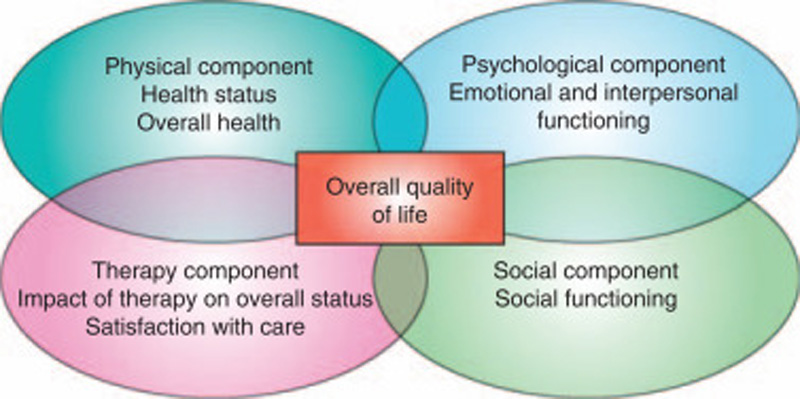Group and Individual-level Change on Health-related Quality of Life in Chiropractic Patients with Chronic Low Back or Neck Pain
SOURCE: Spine (Phila Pa 1976). 2018 (Oct 11) [Epub]
Ron D. Hays, Ph.D., Karen L. Spritzer, B.S., Cathy D. Sherbourne, Ph.D., Gery W. Ryan, Ph.D., Ian D. Coulter, Ph.D.
Division of General Internal Medicine & Health Services Research
UCLA Department of Medicine
911 Broxton Avenue
Los Angeles, CA
STUDY DESIGN: Prospective observational study.
OBJECTIVE: To evaluate group-level and individual-level change in health-related quality of life among persons with chronic low back pain or neck pain receiving chiropractic care in the United States.
SUMMARY OF BACKGROUND DATA: Chiropractors treat chronic low back and neck pain, but there is limited evidence of the effectiveness of their treatment
METHODS: A 3–month longitudinal study of 2,024 patients with chronic low back pain or neck pain receiving care from 125 chiropractic clinics at 6 locations throughout the United States was conducted. Ninety-one percent of the sample completed the baseline and 3–month follow-up survey (n = 1,835). Average age was 49, 74% females, and most of the sample had a college degree, were non-Hispanic White, worked full-time, and had an annual income of $60,000 or more. Group-level (within group t-tests) and individual-level (coefficient of repeatability) changes on the Patient-Reported Outcomes Measurement Information System (PROMIS) v2.0 profile measure was evaluated: 6 multi-item scales (physical functioning, pain, fatigue, sleep disturbance, social health, emotional distress) and physical and mental health summary scores.
RESULTS: Within group t-tests indicated significant group-level change (p < 0.05) for all scores except for emotional distress, and these changes represented small improvements in health (absolute value of effect sizes ranged from 0.08 for physical functioning to 0.20 for pain). From 13% (physical functioning) to 30% (PROMIS-29 Mental Health Summary Score) got better from baseline to 3 months later according to the coefficient of repeatability.
There are more articles like this @ our:
Low Back Pain and Chiropractic
and the:
CONCLUSIONS: Chiropractic care was associated with significant group-level improvement in health-related quality of life over time, especially in pain. But only a minority of the individuals in the sample got significantly better (“responders”). This study suggests some benefits of chiropractic on functioning and well-being of patients with low back pain or neck pain.
Key Words: low back pain, neck pain, chiropractic, PROMIS®, health-related quality of life,
within group change, responders, observational
From the FULL TEXT Article:
Introduction
Musculoskeletal disorders are among the most prevalent health problems and the second leading cause of disability worldwide. [1] Low back pain prevalence for adults in the United States (U.S.) is about 20% and estimated to cost $34 billion in 2010. [2] The authors of one cross-sectional study concluded that prevalent neck pain was weakly associated with the SF-36 physical health summary score and not significantly related to the SF-36 mental health summary score after controlling for comorbidities. [3] Similarly, another study reported no significant association between neck pain and the SF-36 mental health summary score but found a dose response association with the SF-36 physical health summary score, even after adjusting for age, education, arthritis, low back pain, and depressive symptoms. [4] These authors reported similar ssociations in a different study for those with low back pain. [5]
More than 50% of U.S. adults have sought care from a chiropractor and about 30% of those with spinal pain in the U.S. have used chiropractic care. [9] Chiropractors treat chronic low back and neck pain, but there is limited evidence of the effectiveness of their treatment. [7] The UK back pain, exercise and manipulation study documented significant improvements over 3 months attributable to manipulation of 2.5 and 2.9 points on the SF-36 physical and mental health summary scores, respectively. [8]
We conducted a longitudinal observational study of a sample of chronic low back pain (CLBP) and chronic neck pain (CNP) patients receiving chiropractic care to evaluate change in health-related quality of life (HRQOL) using the Patient-Reported Outcomes Measurement Information System (PROMIS®) measure recommended by the National Institutes of Health Task Force on Research Standards for Chronic Low Back Pain [9] and administered along with the Neck Disability Index in a recent study. [40] This study is unique because it provides information on a representative sample of chiropractic patients in care for chronic pain. It provides important information on the effect of chiropractic care for those with long-lasting pain.
Read the rest of this Full Text article now!







Leave A Comment